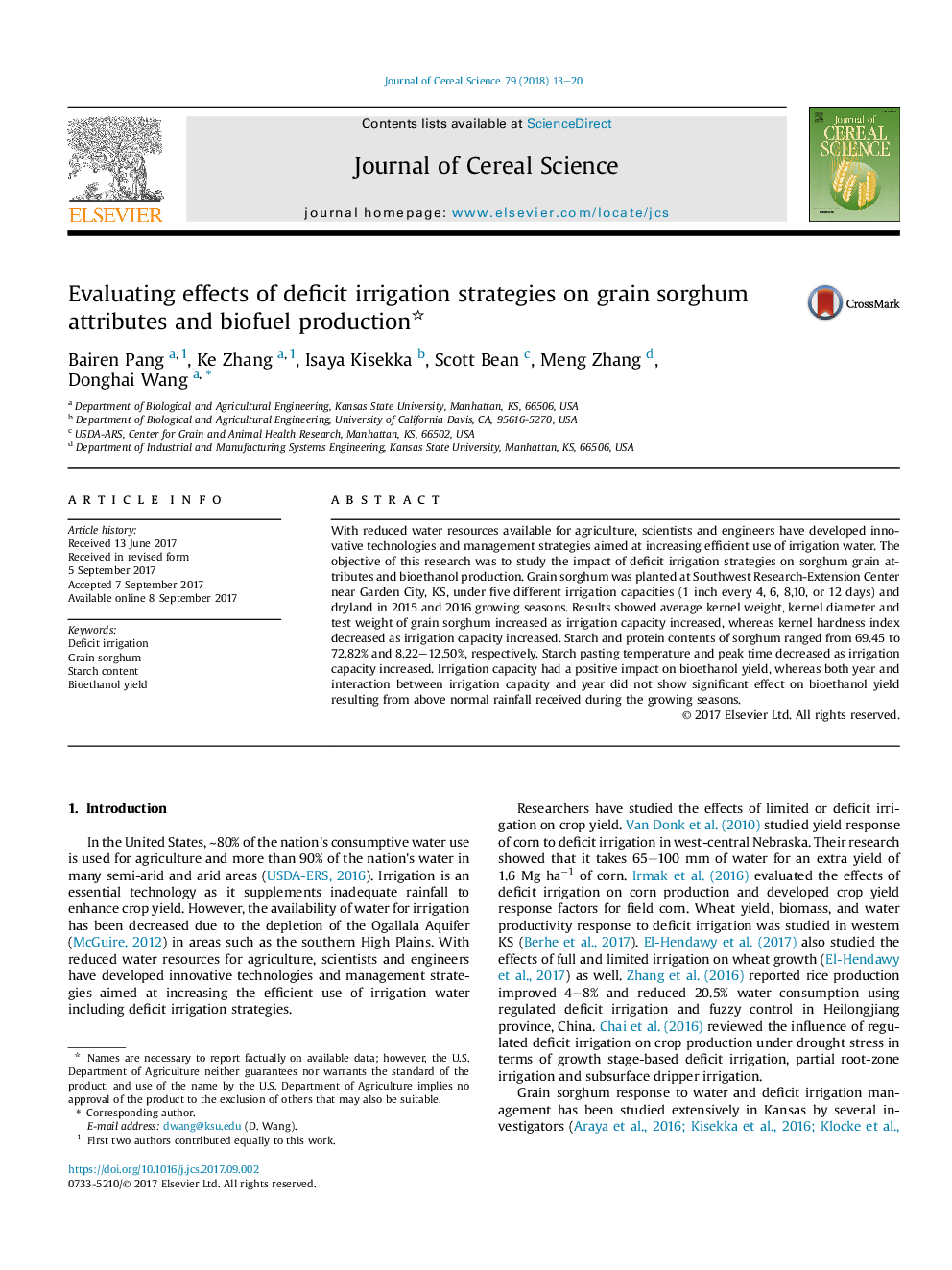| Article ID | Journal | Published Year | Pages | File Type |
|---|---|---|---|---|
| 8881443 | Journal of Cereal Science | 2018 | 8 Pages |
Abstract
With reduced water resources available for agriculture, scientists and engineers have developed innovative technologies and management strategies aimed at increasing efficient use of irrigation water. The objective of this research was to study the impact of deficit irrigation strategies on sorghum grain attributes and bioethanol production. Grain sorghum was planted at Southwest Research-Extension Center near Garden City, KS, under five different irrigation capacities (1 inch every 4, 6, 8,10, or 12 days) and dryland in 2015 and 2016 growing seasons. Results showed average kernel weight, kernel diameter and test weight of grain sorghum increased as irrigation capacity increased, whereas kernel hardness index decreased as irrigation capacity increased. Starch and protein contents of sorghum ranged from 69.45 to 72.82% and 8.22-12.50%, respectively. Starch pasting temperature and peak time decreased as irrigation capacity increased. Irrigation capacity had a positive impact on bioethanol yield, whereas both year and interaction between irrigation capacity and year did not show significant effect on bioethanol yield resulting from above normal rainfall received during the growing seasons.
Related Topics
Life Sciences
Agricultural and Biological Sciences
Agronomy and Crop Science
Authors
Bairen Pang, Ke Zhang, Isaya Kisekka, Scott Bean, Meng Zhang, Donghai Wang,
